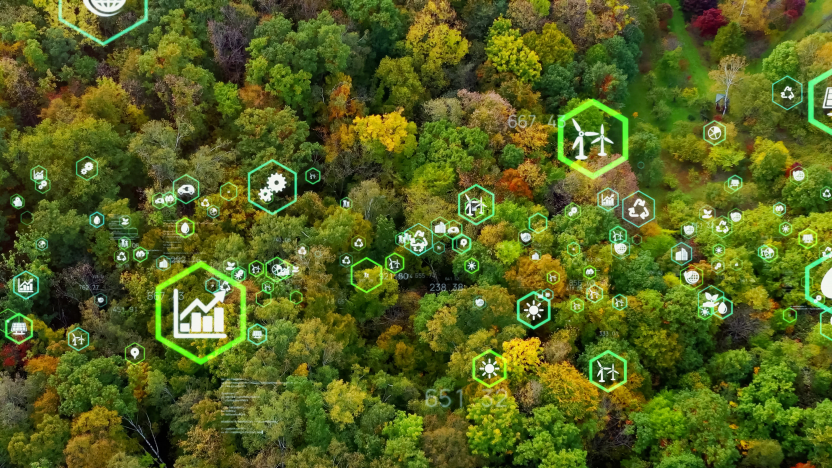Green technology innovations: Patents and the ecological transition

At a time when climate and environmental issues are more important than ever, it is reasonable to look to technological innovation for at least part of the solution. Martin Chaumont explains the critical role of the patent system in protecting, promoting and financing 'green' technology innovations.
Technological innovation driven by ecological considerations can differ significantly from standard commercial and industrial considerations. It is necessary, therefore, to consider them as concrete levers, deployable on a large scale, which must be protected, promoted and financed. This is where the patent system comes in, not as a simple legal formality but as a strategic and structuring tool that supports green technology innovations and, by extension, the ecological transition.
By granting a temporary monopoly to the inventor, patents stimulate investment in research and development (R&D) and encourage technology transfer. Their role is all the more essential in green technologies, where innovation costs are high and risks significant. If supported by ambitious public policies, patents can become a decisive driver of the ecological transition. Unsurprisingly, it is at the European level that we find the most incentives in this field.
Patents: Investment levers for green technology innovations
So-called 'green' technologies – material recycling, renewable energy, carbon capture, pollution control and energy storage – often rely on complex processes and scientific advances that require years of research. Patent protection helps recoup these investments by providing a legal competitive advantage for a limited period while promoting the dissemination of knowledge through the publication of patent applications. In this sense, patents represent a compromise between private incentives and public utility.
The European Patent Office (EPO) has also noted a rapid growth in patent filings in areas related to the fight against plastic waste. Between 1990 and 2023, the number of patent families relating to inventions in plastic waste management increased 18-fold, a growth four times stronger than the overall change in the number of patents. This dynamic particularly concerns chemical recycling technologies, which can process a wider range of plastic waste than traditional mechanical approaches (we also note the crucial importance of AI networks, allowing much more detailed and reactive waste analyses). Other areas, such as biowaste recovery, CO₂ capture or water treatment, are also experiencing an intensification of filings.
These patents not only serve to protect innovation. They also help finance it. A well-drafted patent constitutes a valuable asset for investors or in the context of research partnerships. In fundraising phases or when responding to calls for projects, it represents a guarantee of seriousness, structure and economic potential. In some cases, it can also be licensed, promoting the rapid dissemination of green technology innovations while generating revenue.
Strategically, consulting patent databases is also a powerful tool for competitive intelligence and research direction. At Novagraaf, we use our Questel tool Orbit Intelligence to gather, combine, and organise public data extracted from platforms such as Espacenet or PatentScope to help identify emerging trends, map growing technological areas or detect opportunities for differentiation. Classification tools specific to green technology innovations (such as the Y02 code of the Cooperative Patent Classification) facilitate this work by grouping patents with an environmental impact.
Public incentives and support mechanisms for green patents
Public policy plays a crucial role in making patents an effective vehicle for the ecological transition. While the intellectual property (IP) system stimulates innovation, it does not guarantee its accessibility – particularly for SMEs or research centres with limited resources. This is why the European Union, its member states and numerous innovation support agencies have implemented funding, support and administrative simplification mechanisms specific to green technology innovations.
The Horizon Europe programme, with its budget of nearly €95.5 billion, provides massive funding for research and innovation projects related to the ecological transition. Project leaders must incorporate an IP strategy from the design phase – particularly to organise the protection, exploitation and dissemination of results. Specific guides have been published to help beneficiaries formalise these strategies, including those related to co-ownership and rights management within consortia.
The European Union's Innovation Fund, financed by revenues from the carbon market (EU ETS), supports low-carbon technologies through direct grants. This fund finances both industrial demonstration phases and commercial scale-up. Coverage of patent-related expenses – filing, extension, IP strategy – is eligible in many cases.
On the tax front, several European countries offer specific incentives for patent income. In France, the so-called "patent box" regime allows for a reduced tax rate of 10% on income from the granting or assignment of patents, for example. Meanwhile, the Research Tax Credit (CIR) allows for the deduction of up to 30% of R&D expenses, including those associated with protecting inventions. These measures make IP strategies more accessible and profitable, even for modest businesses.
In terms of procedure, patent offices are also adapting their practices to support sustainable technologies. Accelerated processing programs – such as the UK's Green Channel or the Fast Track schemes offered by some offices – allow for priority granting of applications relating to green technology innovations. This significantly shortens the time between filing and market launch, reducing uncertainty and facilitating financing.
Finally, some initiatives advocate for collaborative approaches to IP in the environmental field. Open licensing or shared patent models are being explored in several jurisdictions to reconcile rights protection and the rapid dissemination of innovations with a positive impact on the climate. These discussions lay the foundations for an IP ecosystem adapted to the major collective challenges of the 21st century.
The role of the patent attorney in supporting the ecological transition
Far from being a simple defence tool, patents are establishing themselves as an essential driver of innovation serving the ecological transition. They protect inventions, give them economic value, structure partnerships and fuel research. However, their full effectiveness depends on the existence of a favourable ecosystem: public aid, tax measures, adapted procedures and a well-integrated innovation strategy. In this context, the role of IP attorneys is crucial. They must identify inventions with a high environmental impact, build coherent protection strategies, optimise existing levers and support project leaders sustainably.
Don't let the virtue of your innovation become a burden! Novagraaf is at your disposal to support the protection and promotion of your green inventions. Contact your patent attorney to find out more or get in touch via the website now.
Martin Chaumont is Head of Contracts and Recordals at Novagraaf France.
